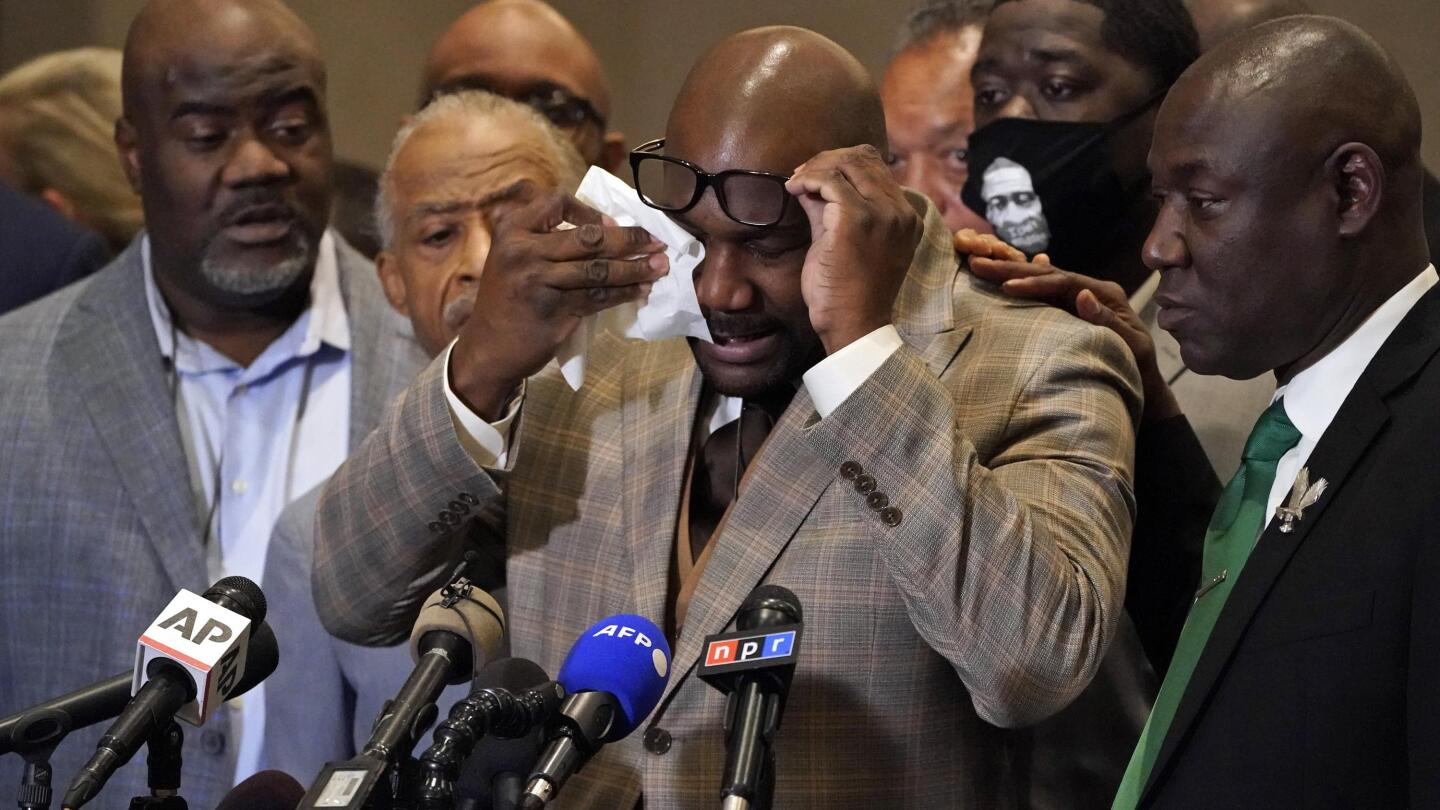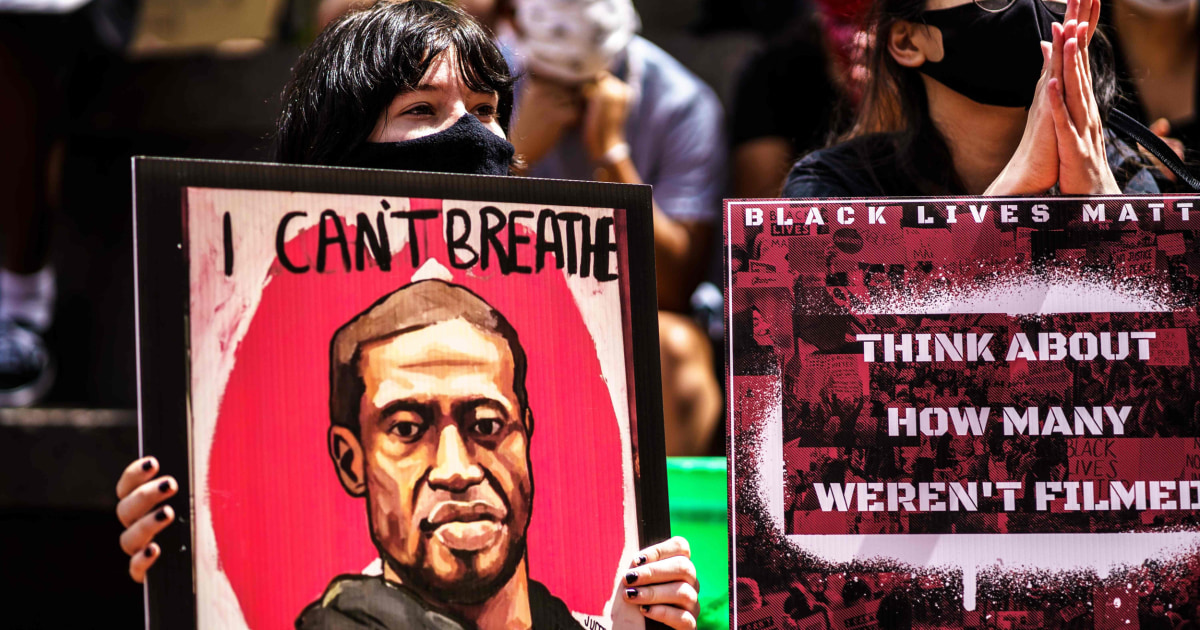Kyllähän siellä katsottiin kuvanauhaa ja tositajat arvioivat, että jalka oli selän, ei niskan päällä. Väitän kyllä että aikamoisen painon selkäpuolelle vaatii, että saat ihmisen hengiltä jos ei mitään muita syitä ole. En usko että itse onnistuisin yrittämälläkään. Saati sitten että onnistuisin tässä ilman, että tästä jää ruumiinavauksessa havaittavia vahinkoja hengitysteihin.
Pastean nyt sinulle pitkät pätkät pulminary expertin todistajanlausonnosta niin ei toivottavasti tästä tartte enää vääntää tämän jälkeen, ainakaan jos sinulla ei ole pistää jotain parempia todisteitä pöytään.
Dr. Martin Tobin, a physician in pulmonary and critical care medicine, said George Floyd died from a "low level of oxygen."
He outlined four factors that contributed to his low oxygen:
"So there are a number of forces that led to – that is the size of his breath became so small and so series of forces higher up that are leading to that. And the main force is that are going to lead to the shallow breath are going to be that he's turned prone on the street. That he has the hand cuffs in place combined with the street and then that he has a knee on his neck and then that he has a knee on his back and down his side. All of these four forces are ultimately going to result in the low tidal volume which gives you the shallow breaths that we saw here. And so the air will not be able to reach those air sacks we just saw on the video where the oxygen is exchanged and the carbon dioxide is removed," he said.
"Mr. Floyd died from a low level of oxygen," a pulmonologist testified at former Minneapolis Police officer Derek Chauvin's trial.
"And this caused damage to his brain that we see and it also caused a PEA arrhythmia, that caused his heart to stop," he told the court.
"The cause of the low level of oxygen was shallow breathing. Small breaths. Small tidal volumes. Shallow breaths that weren't able to carry the air through his lungs down to the essential areas of the lungs that get oxygen into the blood and get rid of the carbon dioxide."
“The street is playing a crucial part because he's against the hard asphalt street. So the way they're pushing down on these handcuffs combined with the street — his left side, and it's particularly the left side we see that — it's like the left side is in a vice. It's totally being pushed in, squeezed in from each side from the street, at the bottom … It's how the handcuffs are being held, how they're being pushed, where they're being pushed that totally interfere with central features of how we breathe,” Tobin said.
“So Mr. Floyd then is pancaked between the pavement underneath him and then force on top of him?” prosecuting attorney Jerry Blackwell asked, to which Tobin responded, “precisely.”
Tobin said Floyd was “being squashed” between two sides. In addition, a knee against the left side of Floyd's chest hampered his ability to breathe.
"Because when you begin to breathe, you begin to breathe with your rib cage and your diaphragm. Then the next thing you recruit after that is your sternum muscle which is the big muscle in your neck. When those are wasted up, then you're relying on these types of muscles like your fingers to try and stabilize your whole right side. Because he's totally dependent on getting air into the right side."
Tobin said he concluded Floyd was "using his fingers and his knuckles against the street to try and crank up the right side of his chest."
"This is his only way to try and get air to get into the right lung," he said.
On his left side, Tobin said, Floyd was similarly trying to use his shoulder to breathe. He said that "because the chest underlying it is so expanded, you get very, very little air in."
"It's a very poor way of breathing. But it's what you have to do when everything else is failing," he said.
Tobin said that Floyd can be seen in the footage ramming his face into the pavement while Chauvin is on top of him in an effort to breathe.
"You can see that Mr. Floyd has his face rammed into the street. Because he's using his face here to — to try to crank up his chest," Tobin said.
"He's actually using his nose and chin and forehead as a way of trying to help him get air into the right side of his chest," he added.
Tobin said that George Floyd's leg movements during the incident shows evidence that he was experiencing a seizure while Chauvin was holding him down.
"We see and we can tell from the movement of his leg that the level of oxygen in his brain has caused what we call a myoclonic seizure activity," he said.
"Those are medical terms but basically it means he has kicked out his leg in an extension form, that he has straightened out his leg, and that is something we see as clinicians in patients when they suffer brain injury as a result of a low level of oxygen."
Tobin was asked if it is significant that Chauvin moved his knee off of Floyd's neck after he was unconscious.
He responded: "No. I mean, it — the movement happens around a different times but obviously the key thing is everything up to the time ... the brain injury that's occurring. And where officer Chauvin moved his knee after that really is not going to have material impact on the case."
Dr. Martin Tobin, a pulmonologist who reviewed medical records in the case, testified that George Floyd's oxygen levels significantly decreased while ex-cop Derek Chauvin was on top of him.
"He has to try to fight against the small volumes he has, and he has to try to lift up the officer's knee with each breath," Tobin testified.
He continued that Floyd "has to try and also lift up the effect of the other officer pumping in his arm with a handcuffed arm. They are pushing it in, into his chest. So he has to make all of these efforts to try and breathe against that."
Prosecuting attorney Jerry Blackwell told Dr. Martin Tobin that the jurors may have heard one of the officers say, "if you could speak, you can breathe" during the trial. Blackwell asked Tobin, a pulmonary expert, if that is a true statement.
""It is a true statement, but it gives you an enormous false sense of security," he said."
Tobin added: "Certainly, at the moment that you are speaking, you are breathing. But it doesn't tell you that you're going to be breathing five seconds later."
Tobin said that Floyd speaking during the incident was important to his analysis of the medical records in this case.
"Because it tells us that for the time that he is speaking, and he continues to speak for 4 minutes and 51 seconds from the time the knee is placed on his neck, and tells us that there could not have been completes compression," he said.
"You can see how he's moving his hip to try and rock the right side of his body to try and get air. You can see him again pushing down on the street to get air in. And there is movements of his hip. You may miss, but he's having to use all his internal spine to just try and get air into that right side of the body. Keep in mind the left side is nonfunctional from the way they have manipulated him and pushed him into the street so he's constantly, cranking up his right side of his body, you can see it right there to try and get some air into his right side of his chest. He's making repeated struggling movements. He's moving again the hips because he's using his spine to try and get them — those muscles to move air into the right side of his chest. And he's again trying to use his right arm and he's unable because of the chain, the small chain linking it over to the left side. He's trying to have pushed down on that right arm into the street to try and help him but he's unable to do it because of the chain on the handcuffs," Tobin said.
The expert said the restraints on Floyd continued even after he stopped breathing.
"No, the restraints continued after that — he has the cessation of respiratory efforts. When you last take a breath the knee remains on the neck for another 3:27 after he takes his last breath. There's the knee remains. After there's no pulse, the knee remains on the neck for another 2:44 after the officers have found themselves, there's no pulse, the knee remains on the neck another 2:44," Tobin said.
Kiistaton fakta on, ettei syyttäjä kyennyt varmuudella todistamaan, että Floyd siihen polviotteeseen kuoli. Enemmän oli muita syitä taustalla.










/img-s3.ilcdn.fi/34e162c7bade4b41a116dc78b414fac96f2fc167b333ca09f576fc7215eaac52.jpg)


